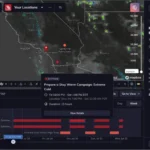TL;DR:
- Unpredictable weather patterns have caused significant losses for farmers in recent years.
- Weather data can enhance crop insurance by improving risk assessment, policy pricing, and product development.
- Advanced weather prediction technologies provide accurate data on temperature, precipitation, wind, and soil moisture levels.
- Weather data helps insurance companies save money, improve operational efficiency, and enhance customer satisfaction.
- Tomorrow.io offers tools and solutions to integrate weather data into crop insurance policies, leading to better financial outcomes.
It’s been a challenging few years for farmers.
What’s to blame?
The weather.
Farmers have faced increasingly unpredictable weather patterns, resulting in significant losses in crop yields and damage to their farms, livestock, employees, and families.
According to the American Farm Bureau Federation (ADBF), in 2023, major disasters and severe weather caused an estimated $21.94 billion in crop losses.
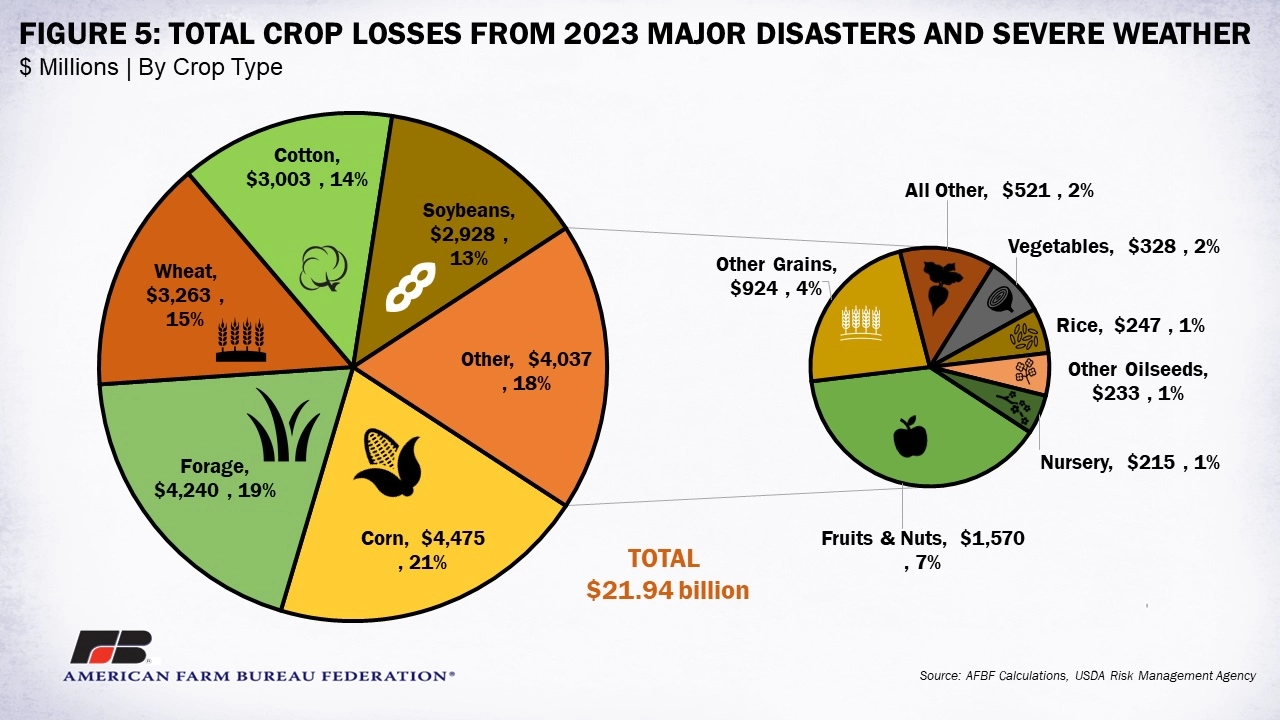
Total Crop Losses From 2023 Major Disasters and Severe Weather | Source: AFBF
In another report analyzing crop losses in Low-Developed Countries (LDCs) between 2008 and 2018, crop loss due to adverse weather conditions accounted for over 34% of global crop losses, equating to $37 billion in overall losses (Source: fao.org).
With weather-induced crop losses this high, more effective risk management strategies are critical in agriculture.
For insurance companies, the challenge lies in accurately assessing these weather-related risks to provide adequate coverage while maintaining profitability. This is where advanced weather prediction technologies ocome into play. By leveraging detailed and accurate weather data, insurance companies can significantly improve their crop insurance policies, resulting in better risk assessment, precise policy pricing, and innovative product development.
This article explores how insurance businesses can harness the power of weather data to enhance their crop insurance offerings, ultimately saving money, time, and effort.
Understanding Crop Insurance
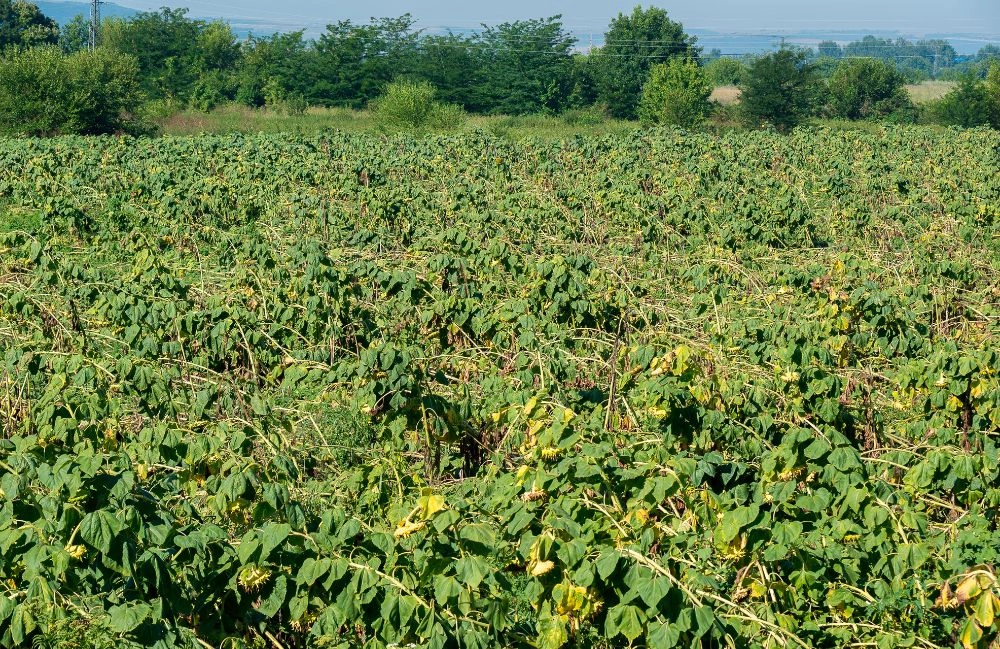
Definition:
Crop insurance is a type of coverage designed to protect farmers against the financial risks associated with adverse weather conditions. This insurance can cover losses due to events such as drought, excessive rain, frost, hail, and other weather-related disasters. By providing a safety net, crop insurance helps ensure that farmers can recover and continue their operations even after experiencing significant weather-related losses.
Common Challenges:
Insurance companies face several challenges when offering crop insurance. One of the most significant is accurately predicting weather-related risks. Traditional methods of risk assessment often fall short due to the inherent unpredictability of weather patterns. Additionally, determining the appropriate pricing for policies and developing products that cater to the specific needs of farmers in different regions adds to the complexity. These challenges highlight the need for more sophisticated tools and data to enhance the effectiveness of crop insurance.
The Role of Weather Data in Crop Insurance
Advanced Weather Prediction Technologies:
Weather prediction technologies have advanced significantly in recent years, providing more accurate and granular data than ever before. These technologies utilize satellite imagery, radar systems, and sophisticated algorithms to forecast weather conditions with high precision. This wealth of data allows insurance companies to make informed decisions about risk assessment and policy pricing.
Types of Weather Data:
Several types of weather data are particularly relevant to crop insurance, including:
- Temperature: Monitoring temperature variations can help predict frost events and heatwaves.
- Precipitation: Accurate data on rainfall helps assess the risk of droughts and floods.
- Wind Speed and Direction: Understanding wind patterns is crucial for predicting storms and hurricanes.
- Soil Moisture Levels: Soil moisture data helps in assessing the risk of drought and crop stress.
By leveraging these data points, insurance companies can better understand the weather-related risks that affect crop yields and tailor their policies accordingly.
How Weather Data is Utilized in Crop Insurance
| Aspect | Description | Example |
|---|---|---|
| Risk Assessment | Weather data is crucial for assessing the risk of adverse weather events. By analyzing historical weather patterns and forecasting future conditions, insurance companies can determine the likelihood of events such as droughts, floods, and frost. This data-driven approach allows for a more accurate evaluation of risks associated with insuring crops. | For instance, an insurance company might use historical rainfall data to assess the drought risk for a particular region. By comparing this data with current weather forecasts, they can make informed decisions about the level of coverage required. |
| Policy Pricing | Accurate weather forecasts and historical data help insurance companies determine the appropriate pricing for their policies. By understanding the risk factors associated with different weather conditions, insurers can set premiums that reflect the true cost of coverage. | A hypothetical scenario might involve an insurer using temperature and precipitation data to price policies for farmers in a region prone to frost and excessive rainfall. The data enables the insurer to offer competitive premiums while ensuring they remain financially viable. |
| Product Development | A hypothetical scenario might involve an insurer using temperature and precipitation data to price policies for farmers in a region prone to frost and excessive rainfall. The data enables the insurer to offer competitive premiums while ensuring they remain financially viable. | An example of product development could be the creation of a specialized insurance policy that offers enhanced coverage for frost damage in areas known for frequent frost events. This product would be based on detailed frost alert data and historical frost occurrence. |
Impact Areas for Insurance Companies
Accurate weather data brings substantial financial savings to insurance companies.
By leveraging precise risk assessments, companies can set premiums that accurately reflect the likelihood of weather-related events. This ensures that collected premiums are adequate to cover claims, preventing financial strain. For example, an insurance company using advanced weather prediction technologies to evaluate drought risks can avoid unexpected high payouts during drought seasons, thereby optimizing financial resources and enhancing profitability.
Operational efficiency is another significant benefit. Integrating weather data into the underwriting process streamlines operations, reducing the time and effort required for risk assessment and policy adjustments. Automated data analysis and risk evaluation enable quicker decision-making and policy issuance. An insurer utilizing automated weather data analysis can swiftly adjust policies and premiums in response to changing weather forecasts, ensuring that their coverage remains relevant and accurate without extensive manual intervention.
Customer satisfaction is greatly enhanced by providing accurate and timely coverage based on weather predictions. Farmers benefit from insurance policies tailored to their specific weather-related risks, ensuring they receive appropriate compensation when adverse weather events occur. For instance, a farmer with a crop insurance policy that includes real-time frost alerts can take preventive measures to protect their crops, reducing losses and increasing trust in their insurer. This proactive approach leads to higher customer loyalty and positive word-of-mouth referrals.
Tomorrow.io’s Tools, Solutions, and Services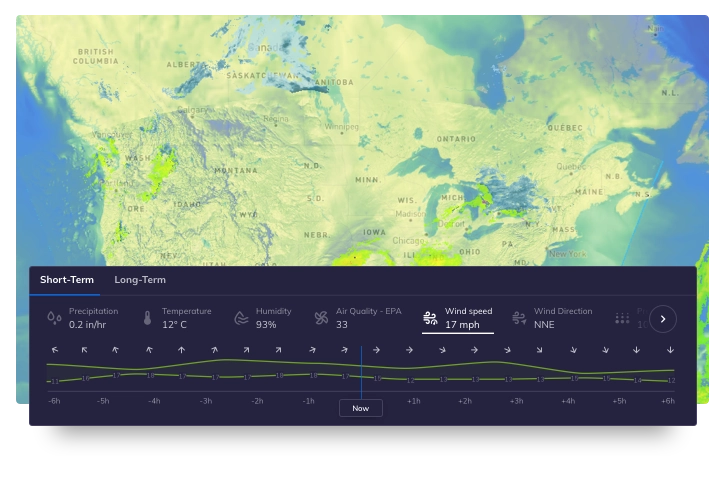
Tomorrow.io offers a comprehensive suite of tools and solutions designed to enhance the effectiveness of crop insurance policies through precise weather data.
Their advanced weather prediction technology leverages satellite imagery, radar systems, and sophisticated algorithms to provide accurate and granular weather forecasts.
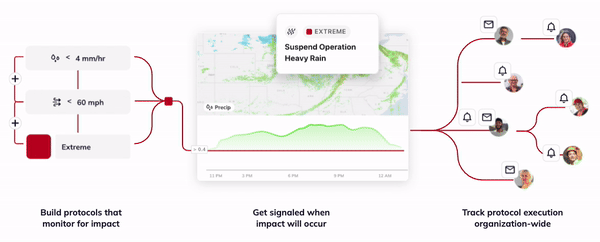
This enables insurance companies to make informed decisions regarding risk assessment, policy pricing, and product development. These improvements allow you to improve operational resilience.
One of the standout features of Tomorrow.io’s services is their weather data, which you can integrate into your systems and processes to see the influence of weather on claims, engagement, and more.
Their data offers historical archives and real-time weather insights that help you validate claims efficiently. For instance, insurers can cross-reference a farmer’s claim of crop damage due to frost with real-time frost alerts and historical temperature data, ensuring accurate and justified payouts.
Tomorrow.io also facilitates informed decision-making by offering precise early warnings and preventative measures for extreme weather events. Insurance companies can provide policyholders with timely alerts about impending weather conditions, allowing them to take preventive actions. This not only reduces potential damages but also enhances customer satisfaction by demonstrating proactive support.
Moreover, Tomorrow.io’s predictive coverage needs feature helps insurers engage with policyholders to offer tailored policy recommendations. By analyzing weather data, insurers can identify regions at higher risk for specific weather events and offer appropriate coverage options. This targeted approach ensures that farmers receive the most relevant and effective insurance products.
Additionally, Tomorrow.io’s pre-built insurance dashboards provide a quick start for companies looking to integrate weather data into their operations. These templates help insurers rapidly deploy solutions for auto damage claim prevention, property damage claim prevention, and policyholder engagement, boosting operational efficiency and customer satisfaction.
By integrating Tomorrow.io’s cutting-edge tools and solutions, insurance companies can enhance their crop insurance offerings, streamline operations, and improve customer satisfaction, ultimately leading to better financial outcomes.
Conclusion
Integrating advanced weather data into crop insurance policies offers significant benefits for insurance companies.
By leveraging Tomorrow.io’s cutting-edge tools and solutions, insurers can achieve accurate risk assessment, precise policy pricing, and innovative product development. This approach not only leads to substantial financial savings and operational efficiency but also enhances customer satisfaction through proactive support and tailored coverage options.
In an industry where weather unpredictability poses significant challenges, utilizing weather prediction technologies is essential. Insurance companies that embrace these advancements will be better equipped to protect farmers, ensure profitability, and stay ahead in a competitive market.
FAQ
Which weather extremes pose the biggest risks in crop insurance?
The most damaging weather extremes for crops include hail, drought, flooding, and extreme heat. These events can quickly destroy yields, reduce crop quality, and lead to major financial losses for both farmers and insurers. Understanding when and where these risks are likely to occur is essential for better risk management and policy planning.
How can advanced weather forecasting help farmers and crop insurers reduce losses?
Advanced weather forecasting provides early warnings that help farmers take protective actions, such as adjusting irrigation, applying crop treatments, or modifying harvest schedules. For insurers, accurate forecasts support better risk assessments, faster claims processing, and stronger loss prevention strategies. Together, this leads to reduced financial exposure and greater resilience in the face of extreme weather.








